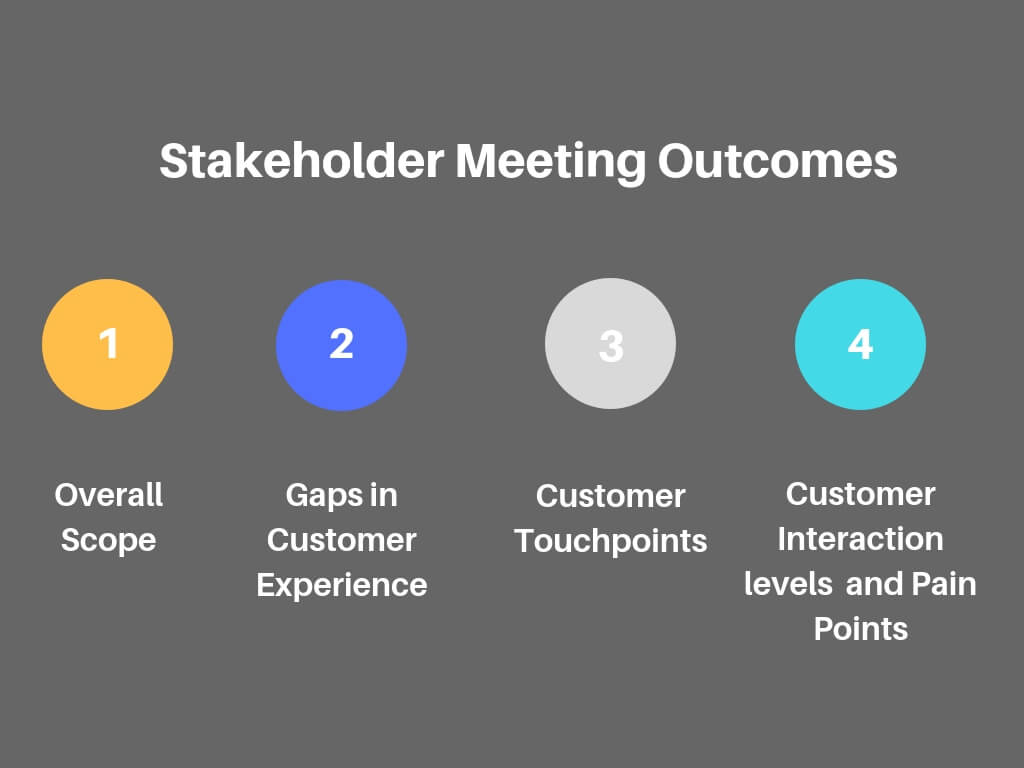
4 Essential elements for customer journey mapping
Building blocks in customer journey mapping
Customer journey mapping is an essential component of today’s business strategy. It determines the customer journey and the key customer touchpoints to focus.
In the contemporary world, customer behavior is evolving very swiftly. Customers are becoming more tech-savvy and have already adapted to the digital lifestyle.
There is a multitude of opportunities in the digital world for businesses to connect with their consumers.
So how can your business gear up with this fast-paced digital transformation?
Brands are primarily considering omnichannel marketing, digital campaigns and email marketing for customer connect.
The increasing internet, smartphone, and social media penetrations are driving marketing initiatives to newer levels.
How does a customer journey mapping help business to stay more connected with its consumers?
Customer journey mapping allows brands to:
- Understand their target audience
- Identify brand preference, purchase behavior, and pain points.
- Effectively service customer needs at the right time
- Seamlessly guide the customers through the path to purchase
Let’s glance at the essential elements for customer journey mapping.
Drawing Board: Establishing the objectives
The primary part of an effective customer journey mapping is setting its goals right.
In this stage the brand must also consider the following:
- Define the shortcomings in the current customer experience model
- Identify ways to service the customer experience gaps defined.
The stakeholder meeting helps in establishing goals that are in line with the business strategies. It also helps in stating factors across the customer journey that is hindering business growth and value addition. Including key decision makers from the customer-facing teams would add value to these meetings.
The stakeholder meetings help to determine the following:
- The overall scope of the journey map
- Gaps in existing customer experience and
- Customer touchpoints at different stages of purchase lifecycle.
- Identify the customer interaction levels across the various team
- Establish customer pain points.

Customer touch points identified:
Brand Website, social media channels, call centers, point-of-sales, print media, email marketing, in-store purchase, after sale services, loyalty programs, etc.
Know your customers: Research and Feedback
Analyze past research data on customer experience, customer satisfaction, and social media campaigns. It allows businesses to learn more about their target audience behavior and segment them effectively.
Each of these target audience group consists of a diverse and unique customer journey.
By combining the insights from all the research and customer feedback, an effectual customer journey map is drawn out.
It represents the target audience path to purchase, after sales and repeat purchase behaviors, pain points and areas of improvement.
Research Techniques commonly in use:
Customer experience research:
Customer experience research with a quantitative scoring scale. It allows the business to quickly obtain customer satisfaction levels.
Customer response on the product, service and overall customer experience is recorded. It provides relevant insights to brands on their existing customer experience, product and service delivery performance.
Voice-of- the customer (VOC): VOC data from the call centers and customer support teams provide ample insights into the customer satisfaction level.
Customer feedback survey: Captures qualitative customer reviews by asking customers to specify their product and service expectations.
In recent times, social media has turned out to be an excellent customer service opportunity for businesses. Hence, business needs to ensure they drive positive brand conversations through their social channels.
Also, Identify the service gaps that trigger negative comments and customer disengagements. Rectify them to ensure a positive customer experience.
Keep it working
Based on the insights from the stakeholder meetings, research findings, and customer feedback. Businesses need to comprehend a list of customer touchpoints across the purchase lifecycle. It would be the key focus area for the customer journey mapping.
Build a prototype model by considering the following parameters
- The target audience established
- Identified Customer touch points
- Customer satisfaction levels and feedback

Brands must make all the relevant changes and add any missing elements. It will transform the prototype into an actionable tool. Also, generate more productive results.
Publish your journey map
Now after all the updates, visualize the final customer journey map to enhance its storytelling abilities. It includes mapping of customer touchpoints, communication channels, pain points, and customer comments.
And, most importantly it should cover all the business learnings. Also, the improvement areas for the business to act upon. It, in turn, enhances the customer connect in the future.
Circulate this map among your stakeholders to receive feedback. Redesign the map over a specific interval of time to keep it updated with the changing customer mindset and market behaviors.
The customer journey mapping is a continuous process. It requires frequent updates to keep it relevant to the present market conditions. in turn, driving effective customer engagement.
Looking for framing a customer journey map for your brand. Get in touch with our customer experience experts!

